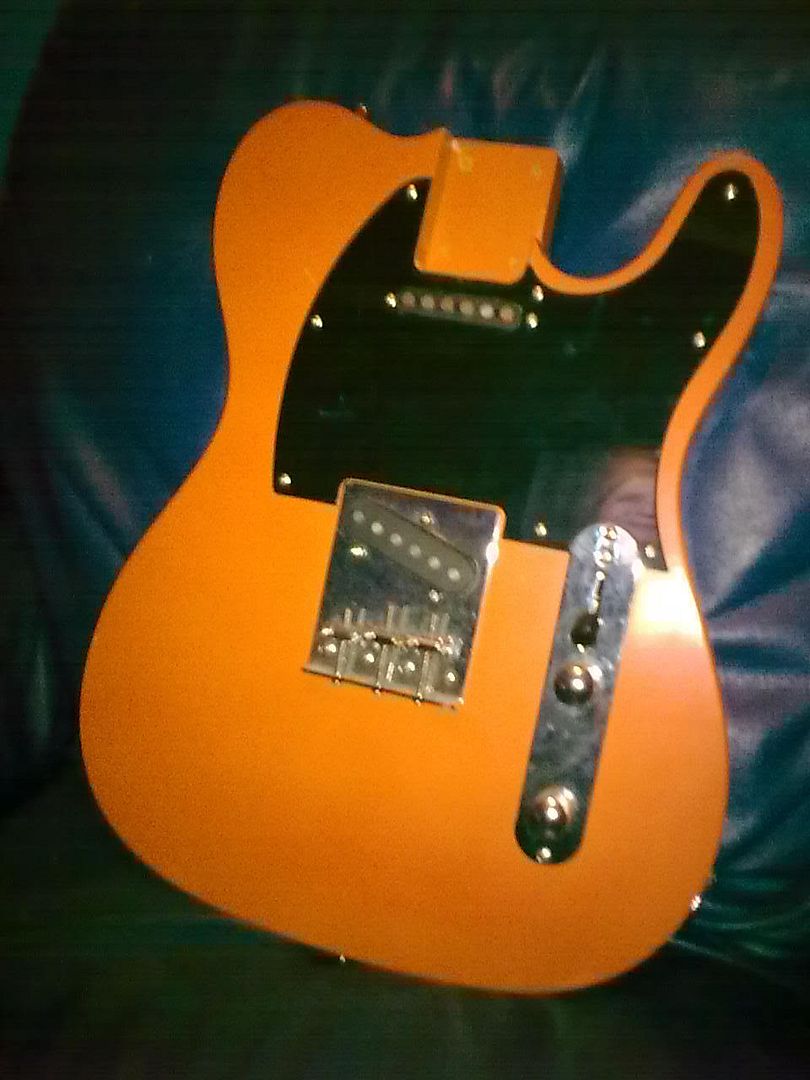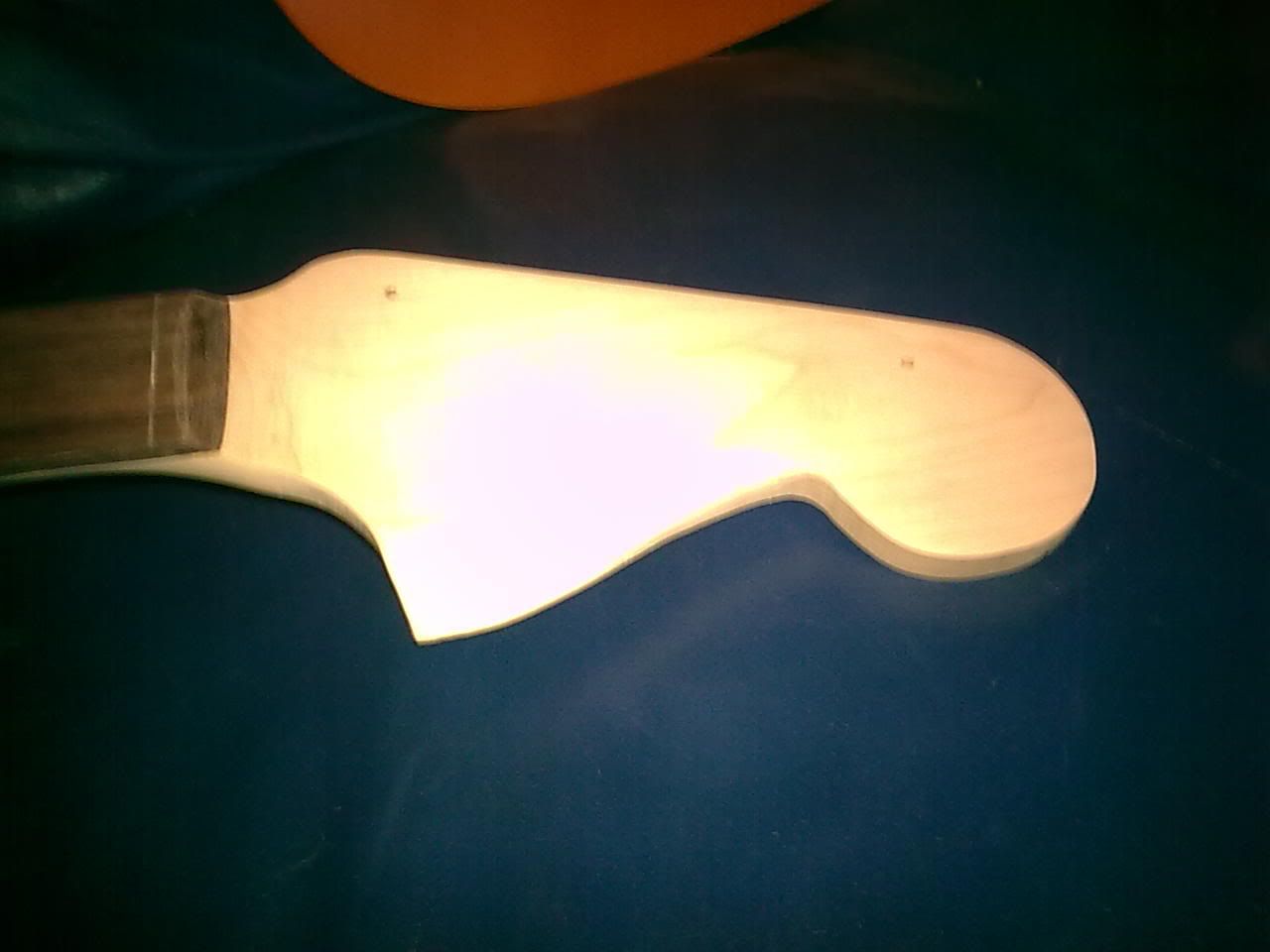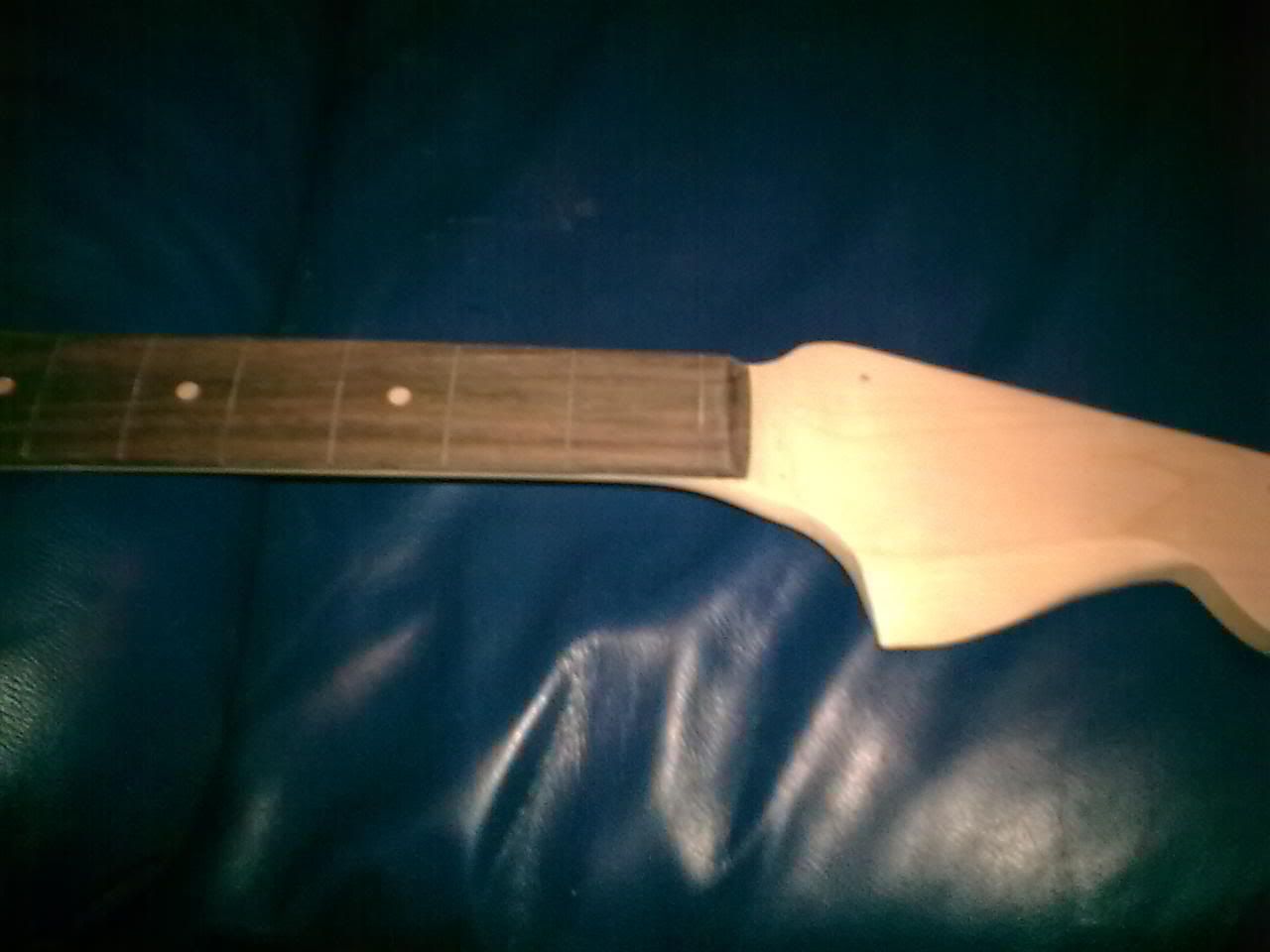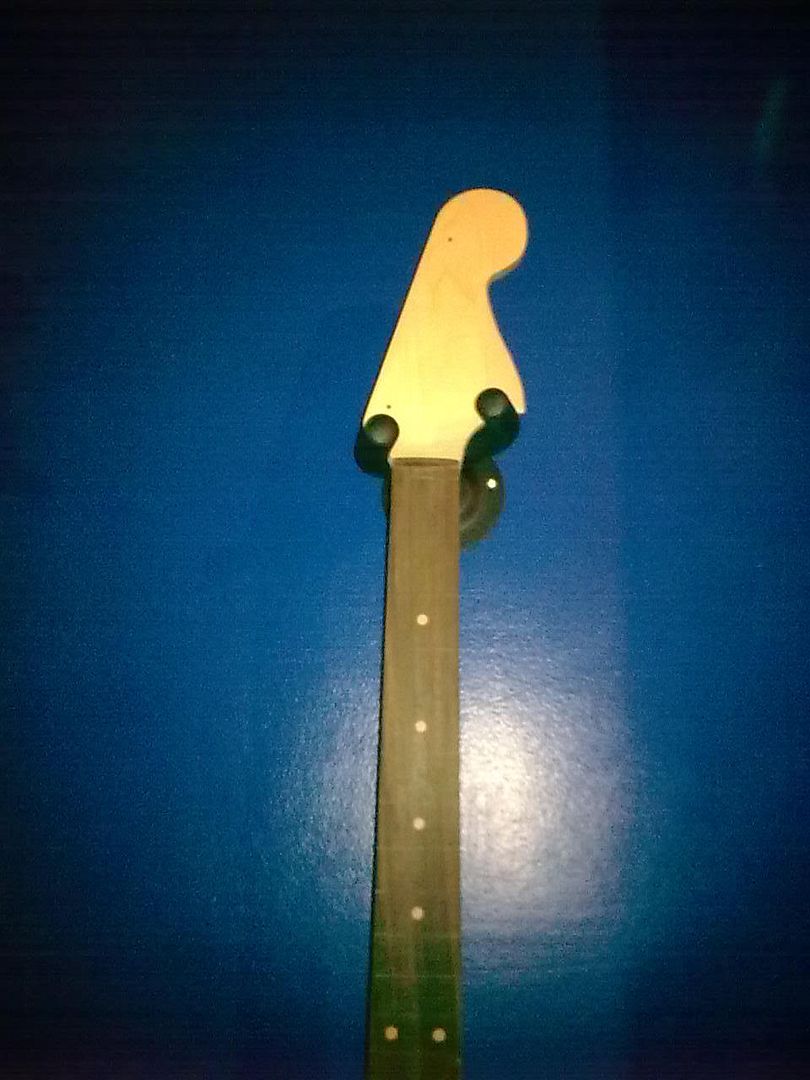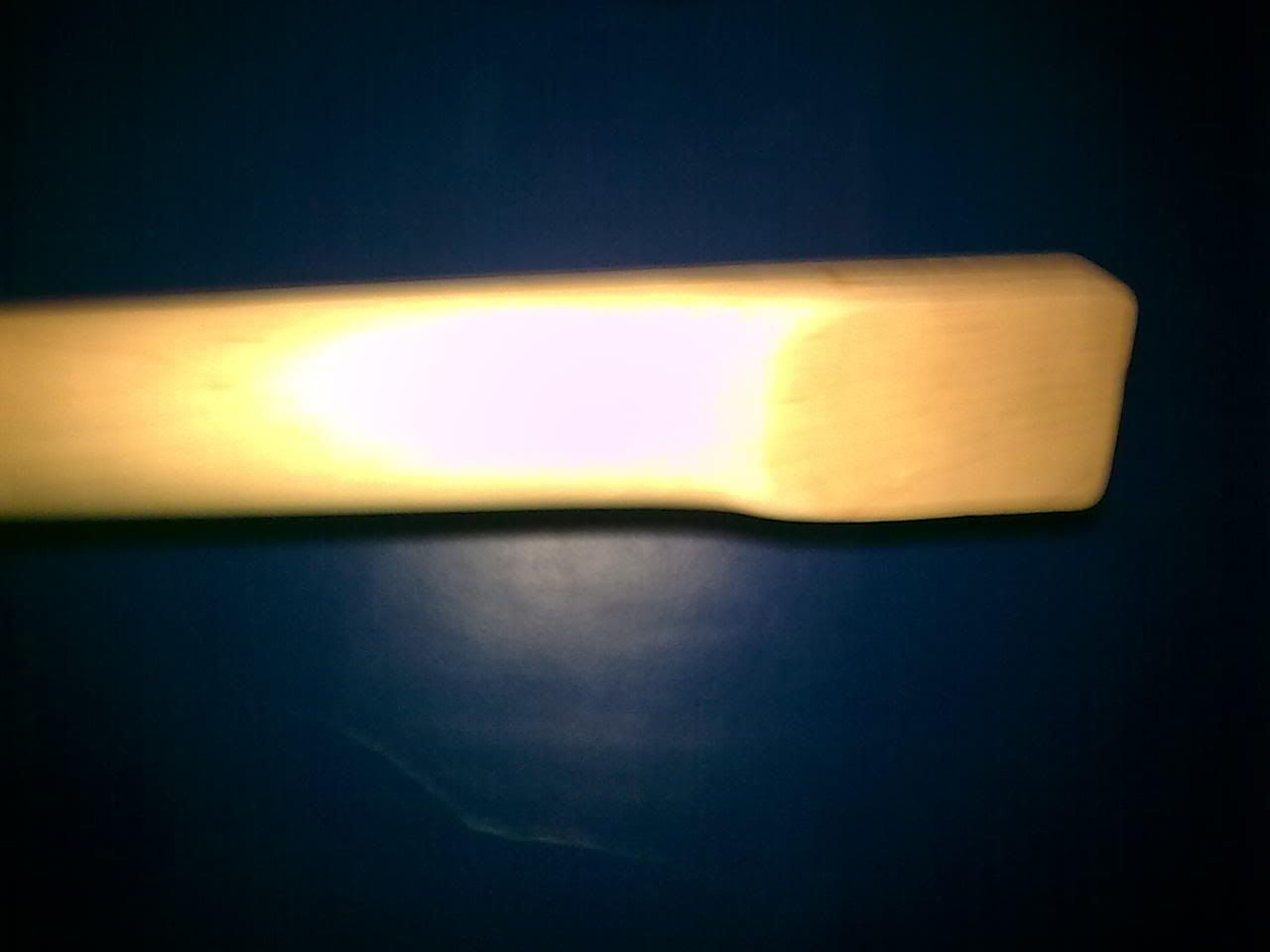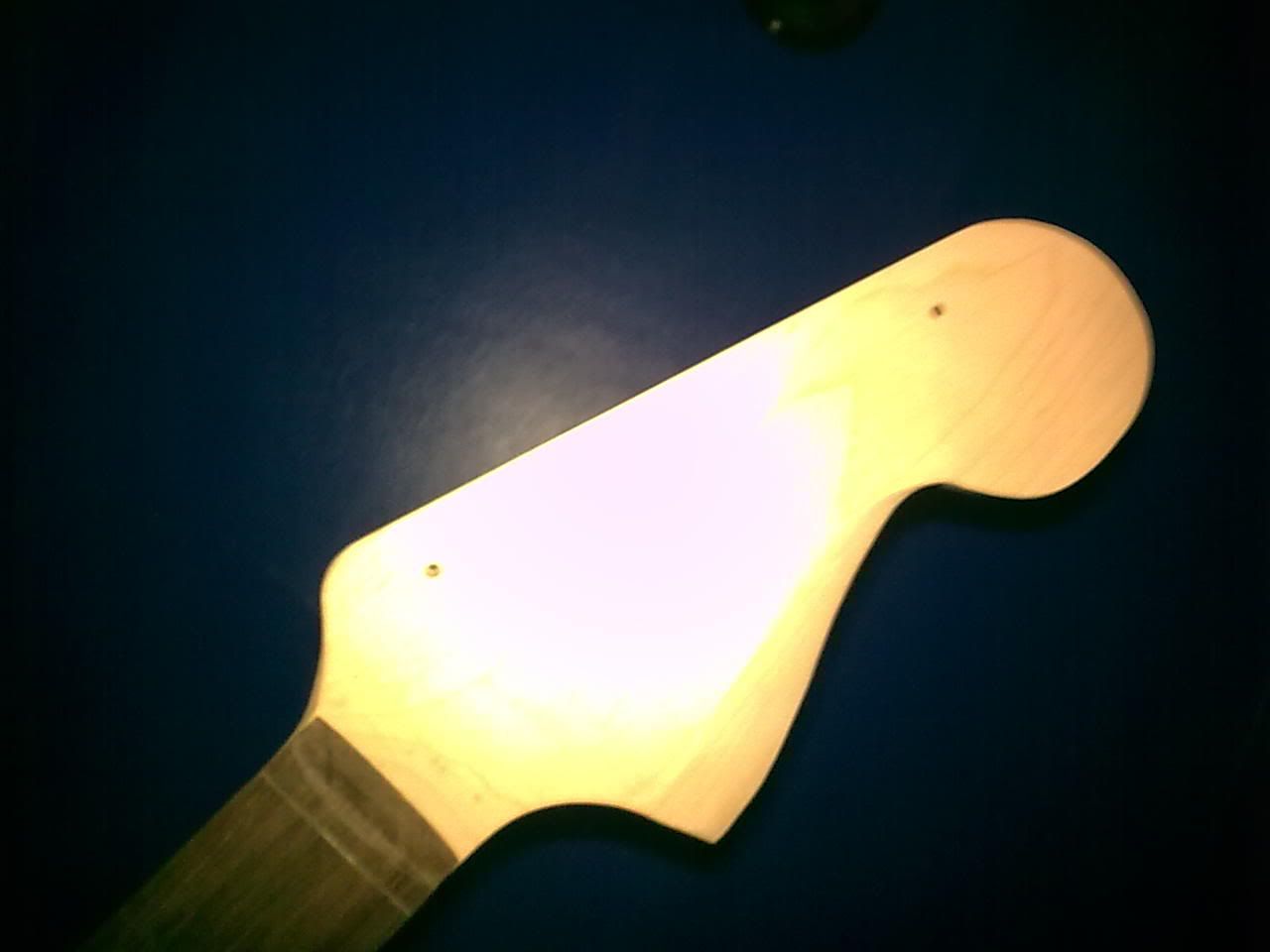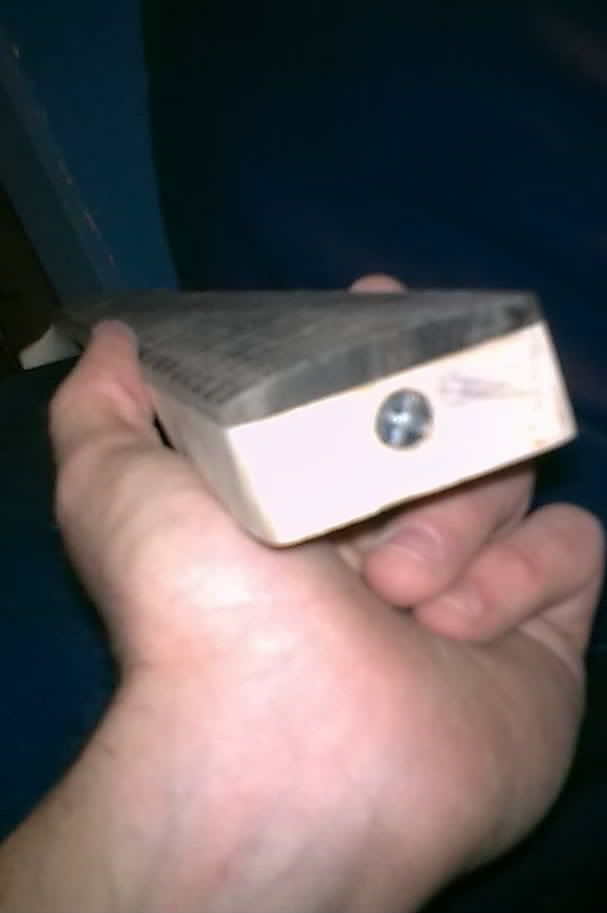Dude - been researching and found the following which might either help or complicate:
"Q I have noticed that Taylor guitars seem to play especially well in tune up the neck. A friend suggested that you may be reducing the distance from the nut to the first fret to allow for the differential string stretch in the lower fret positions. If this is true, can you please tell me by what amount do you reduce that distance? I am building my first guitar and would like to take any opportunity I can to avoid tuning problems.
- - - Michael, San Jose, California
A Yes, we do reduce the distance from the nut to the first fret and we do it by the width of the fret saw kerf plus about .003 to .004" for clean up later in the process, for a total distance of about .016".
A luthier could argue both ways about where to cut the nut slot.
One argument is that you should cut down the middle of each location, including the nut location. Since the fret sits in the middle of the slot (ours is .024") but the nut sits at the front edge of the slot, you effectively chop off about .012" with this line of thinking.
Others will argue that the nut space should be moved back by one half the kerf of the saw blade to compensate.
Both arguments make sense. I have no theory that is intonation based, and as a matter of fact I did it in the way that I explained simply by not thinking it through completely. I was lucky, because the method I chose, quite by accident, works very well. In fact many of the intonation gurus have arguments as to why one MUST cut off distance at the nut, so I guess I'm not so dumb after all."
link here to full faq
In fact if you think about it with most frets have a top width so the strings will actually be clamped against an edge that is not quite on the centre line anyway so it makes sense not to have the leading edge of a nut at the centre line.
Also found this interesting thing on doing a normal nut that achieves the action available with a zero fret....:
pseudo zero fret